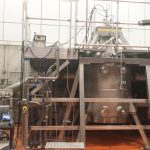
Tested at the High Field Magnetic Laboratory (HFML) at Radboud University Nijmegen, the GHS-C sensors support operation in magnetic fields up to 30 T and at cryogenic temperatures (down to 1.5 K).
The sensors deliver a degree of accuracy that has not previously been achievable under these conditions, sustaining non-linearity errors of significantly less than 1% across the full measurement range.
The transformative magnetic field measurement capabilities of the GHS-C devices are due to the graphene sensor elements.
Graphene’s inherent high electron mobility directly translates into high sensitivity capability, which is maintained across the entire magnetic field range – making these devices far simpler to calibrate.
The two-dimensional nature of graphene also means high quality, repeatable and accurate data is provided by the GHS-C sensor, with no hysteresis and immunity to in-plane stray fields.
This is a step beyond conventional Hall sensors which have demonstrated asymmetry, producing different measurements depending on field direction.
A further advantage of the GHS-C range is their very low power operation resulting in power dissipation is in the <nW range, compared to µW or mWs associated with non-graphene Hall sensors.
Examples of suitable applications include low temperature quantum computing, high-field magnet monitoring in next generation MRI systems, fusion energy field control, particle accelerators, and other scientific and medical instrumentation.
The sensors can also be directly used in fundamental physics experiments e.g., quantum physics research, superconductivity and spintronics.
Image: Paragraf – The image shows (on the right) the 37 T magnet used to test the GHS-C, with a cryostat and variable temperature inserted inside and the measurements electronics and gas handling system (left)